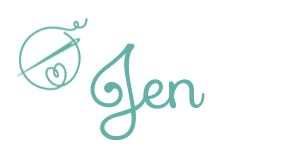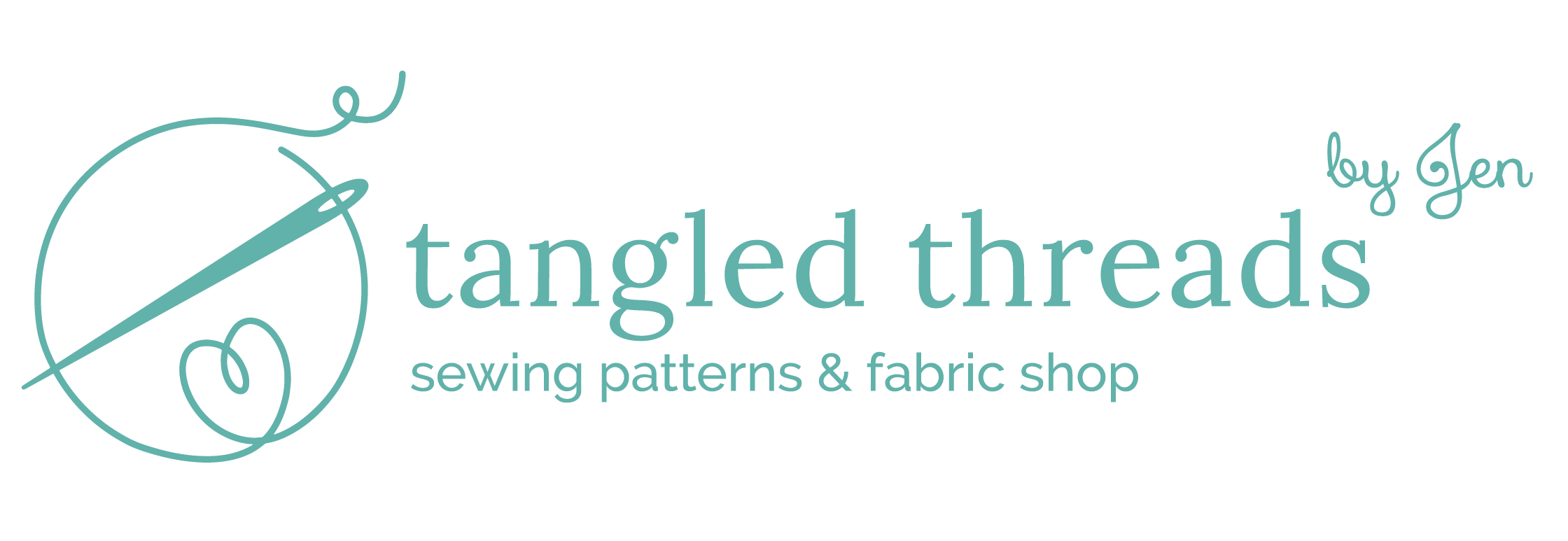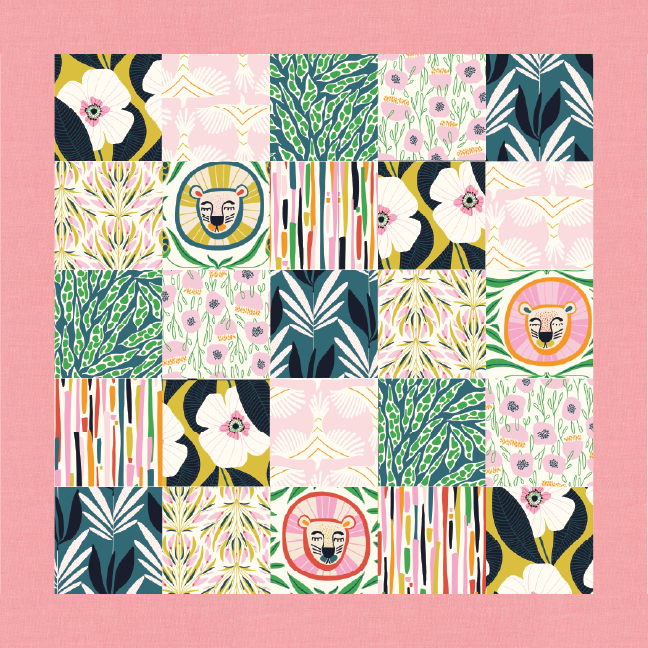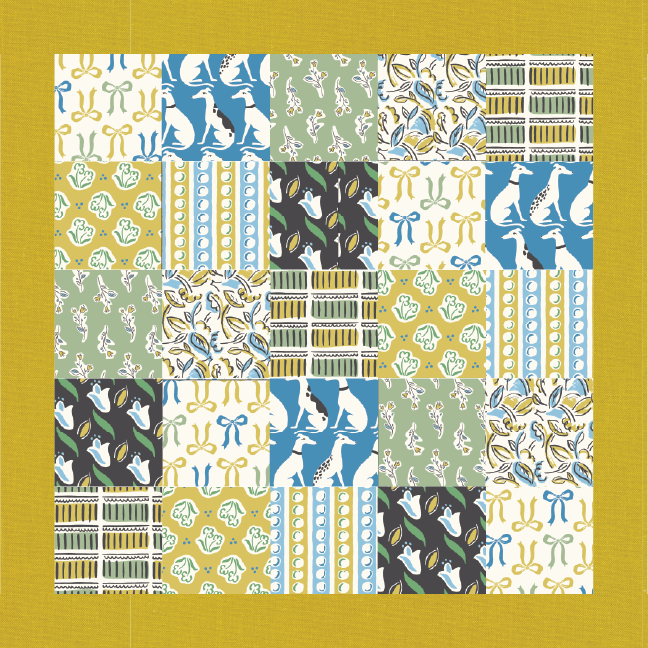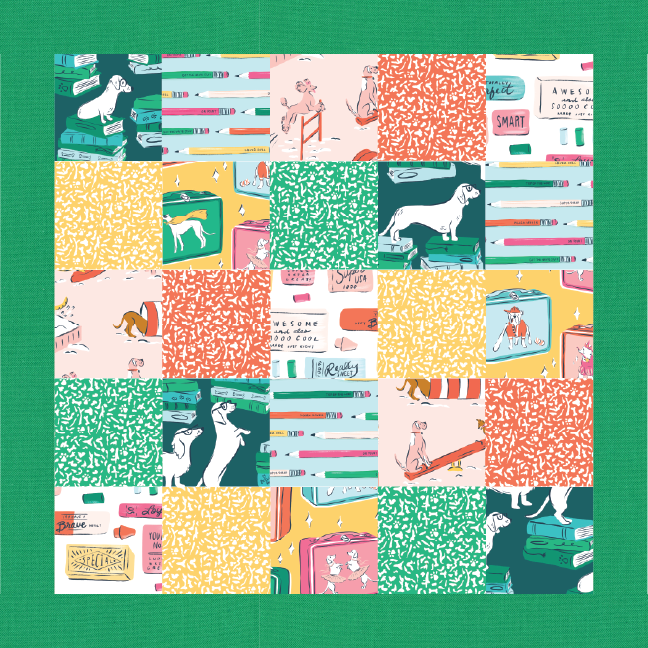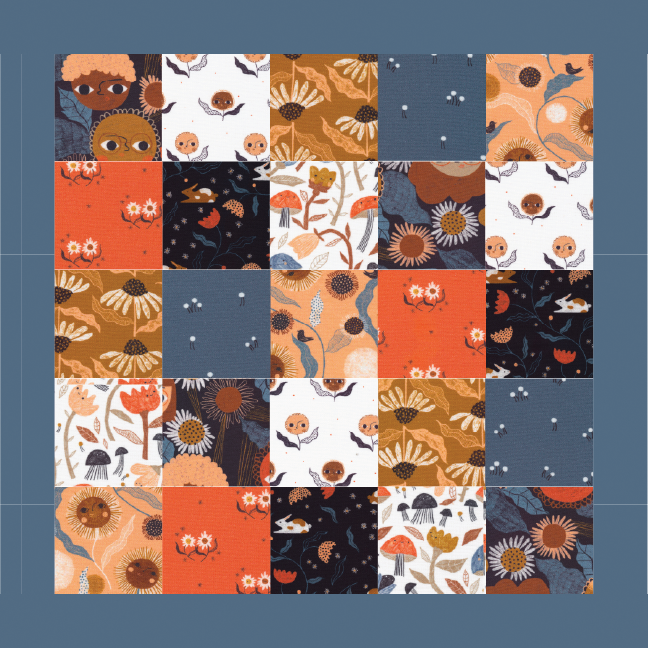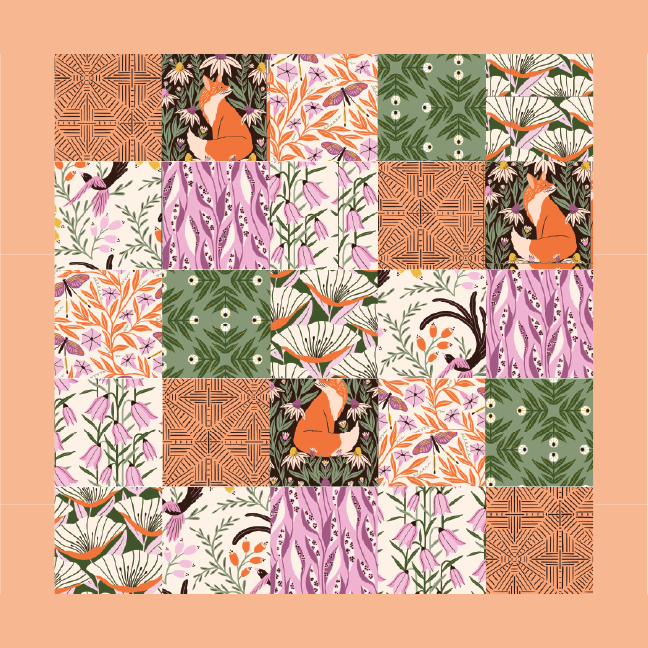Patchwork Pillow Tutorial
Hello and welcome if you’re new here! Today I have a fun pillow project to share with you, it’s a classic patchwork block pillow. You’ll only need a few fabric squares in your favorite prints and some basic quilting supplies. Follow along with this step-by-step guide to sew your own cozy pillow! Gather up your supplies, and let’s get started!

For this pillow, I used the Baltic Woodland fabric collection designed by Maria Galybina for Cloud 9 Fabrics. Inspired by the serene Baltic Sea and wild herbariums, Baltic Woodland brings to life the tranquil flapping of wings, singing birds, and rustling grass where deer and cranes roam. This beautiful collection adds a unique touch to the cozy pillow you’ll create. Learn more about the Baltic Woodland collection here.
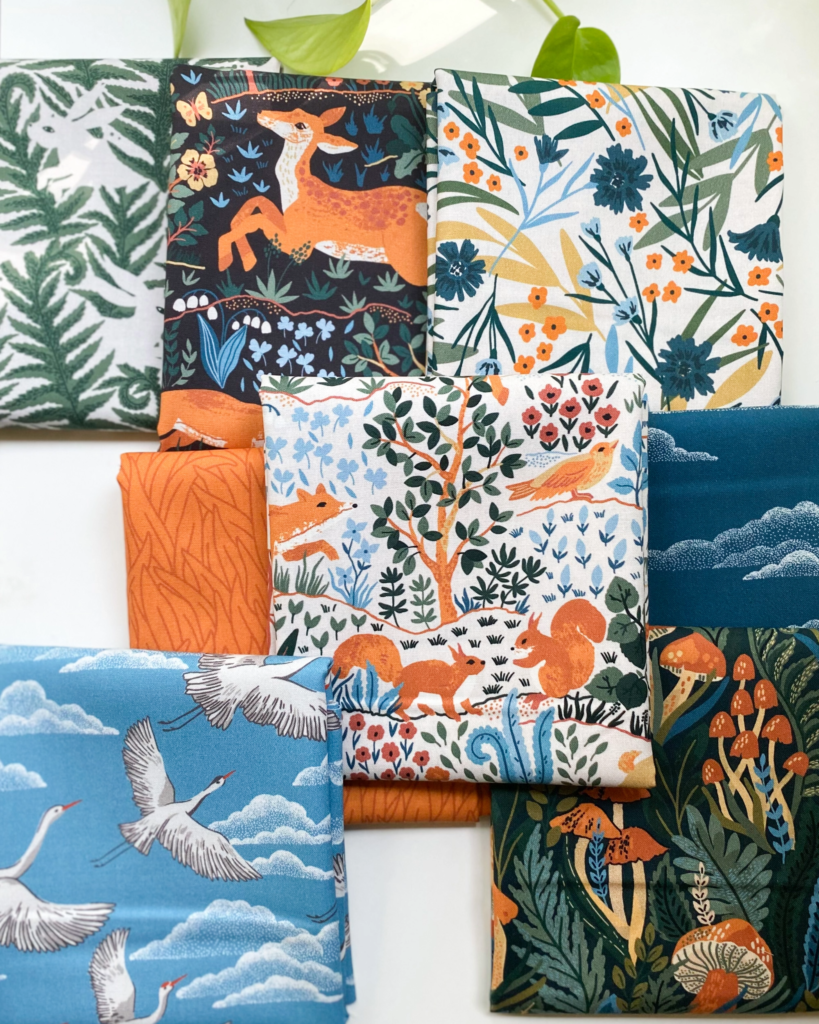

Patchwork Pillow Instructions
The Patchwork Pillow is beginner friendly, and perfect for large scale fabrics. You can easily adapt this pattern to make a quilt as well. The finished pillow / block measures 18″ square.
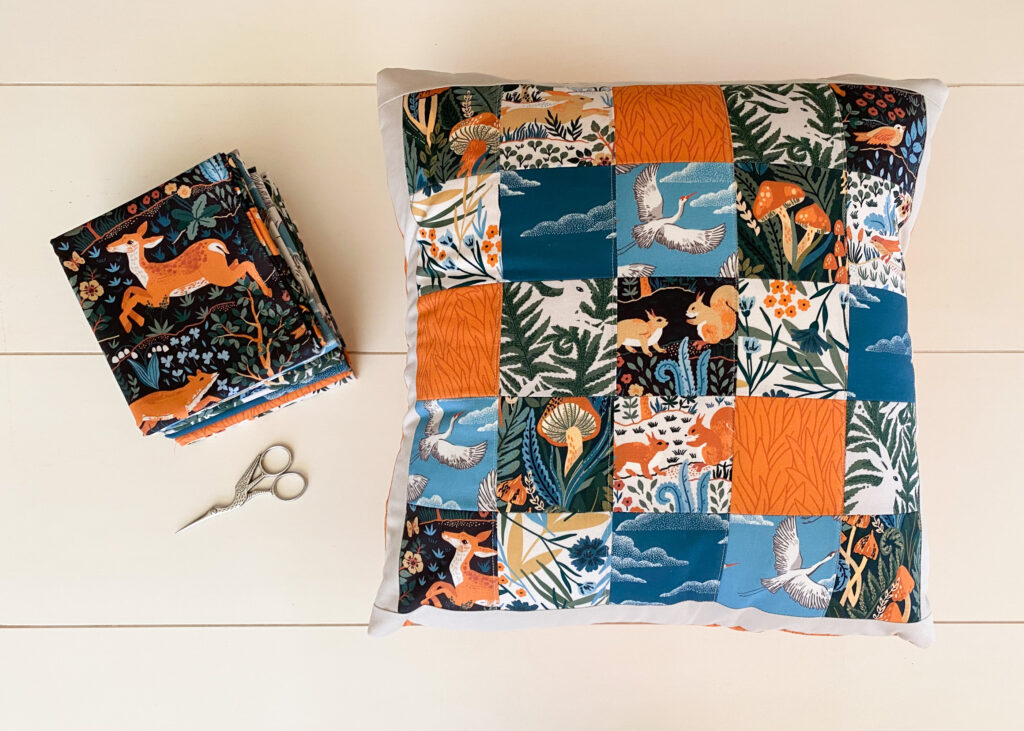
Pattern Notes
Seam allowances are 1/4 inch unless specified.
Materials
Makes one 18″pillow. Width of fabric (WOF) is assumed to be 42″.
- (25) 3 1/2″ x 3 1/2″ squares – Baltic Woodland Fat Quarter Bundle
- (2) 2″ x width of fabric (WOF) strips for borders – Cirrus Solids in Pumice
- (2) – 13″ x 18 1/2″ rectangles for the pillow back – Baltic Woodland Forest Grass
- Lightweight fusible interfacing: 1/2 yard (20″ wide) – such as Pellon® SF101 Shape-Flex®
- 22″ square of fabric for the pillow lining (such as muslin)
- 22″ square of batting
- 18″ pillow form
- Basic quilting supplies

Step 1 – Cut the fabrics
- From border fabric, cut the following:
- (2) – 2″x WOF, then sub-cut:
- (2) – 2″ x 15 1/2″ rectangles
- (2) – 2″ x 18 1/2″ rectangles
- (2) – 2″x WOF, then sub-cut:
- From prints, cut the following:
- (25) – 3 1/2″ x 3 1/2″ squares from various print fabrics. If you’re using a Baltic Woodland collection bundle, cut the following:
- (4) – 3 1/2″ x 3 1/2″ squares of Mushrooms
- (3) – 3 1/2″ x 3 1/2″ squares of Wild Animals Light
- (3) – 3 1/2″ x 3 1/2″ squares Forest Grass
- (3) – 3 1/2″ x 3 1/2″ squares Wild Hares
- (3) – 3 1/2″ x 3 1/2″ squares Wild Animals Dark
- (3) – 3 1/2″ x 3 1/2″ squares Flower Meadow
- (3) – 3 1/2″ x 3 1/2″ squares Light Clouds
- (3) – 3 1/2″ x 3 1/2″ squares Flying Cranes
- (25) – 3 1/2″ x 3 1/2″ squares from various print fabrics. If you’re using a Baltic Woodland collection bundle, cut the following:

- From pillow back fabric, cut the following:
- (2) – 13″ x 18 1/2″rectangles (pillow back) – Forest Grass
- From lightweight interfacing, cut the following:
- (2) – 13″ x 18 1/2″fusible interfacing
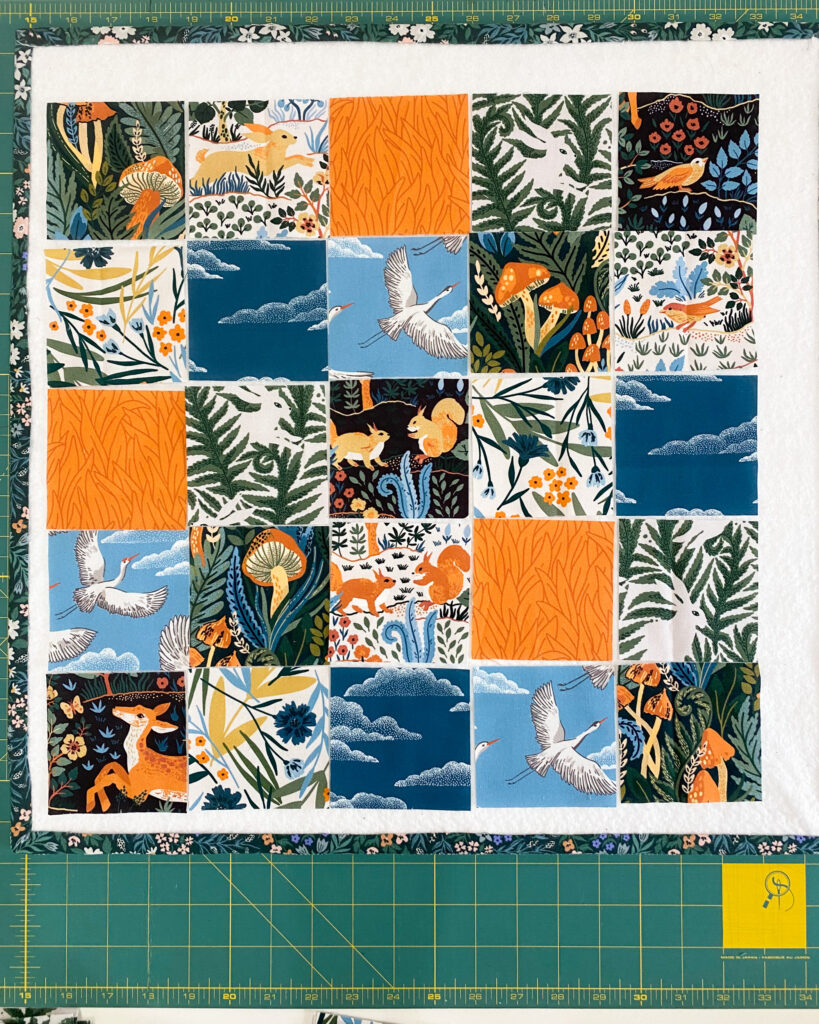
Step 2 – Sew the squares together
- Arrange your 25 squares into 5 rows, with 5 squares in each row.
- Starting with the top row, sew 5 squares together with 1/4″ seam. Press seams to the right.

- Continue sewing the remaining 4 rows, alternating the pressing direction in each row as illustrated below.
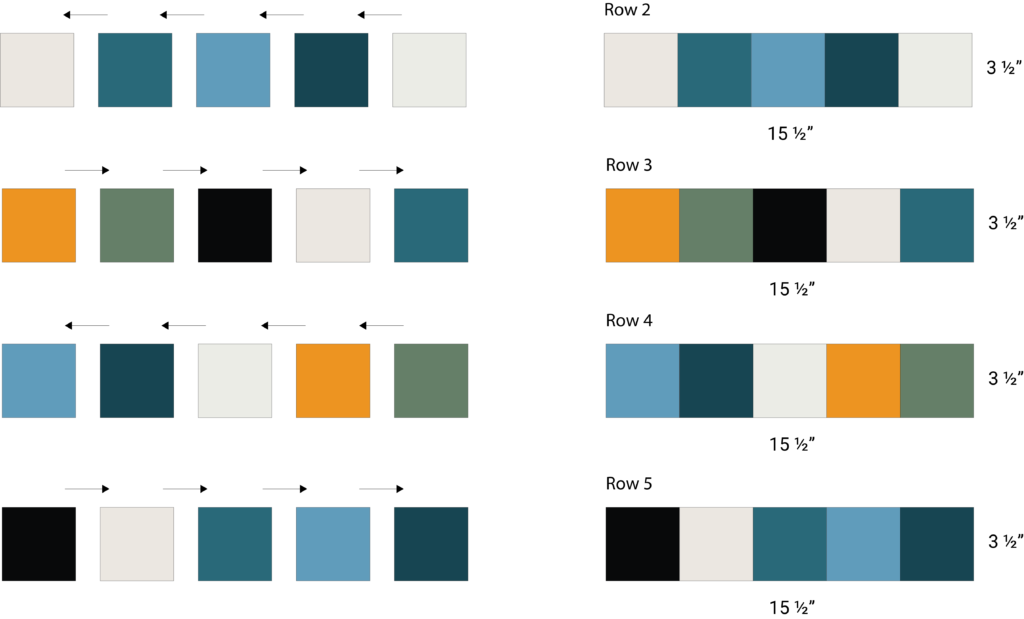

- Pin and sew the rows right sides together, matching up the seams. If you pressed in the direction illustrated above your squares will nest perfectly.

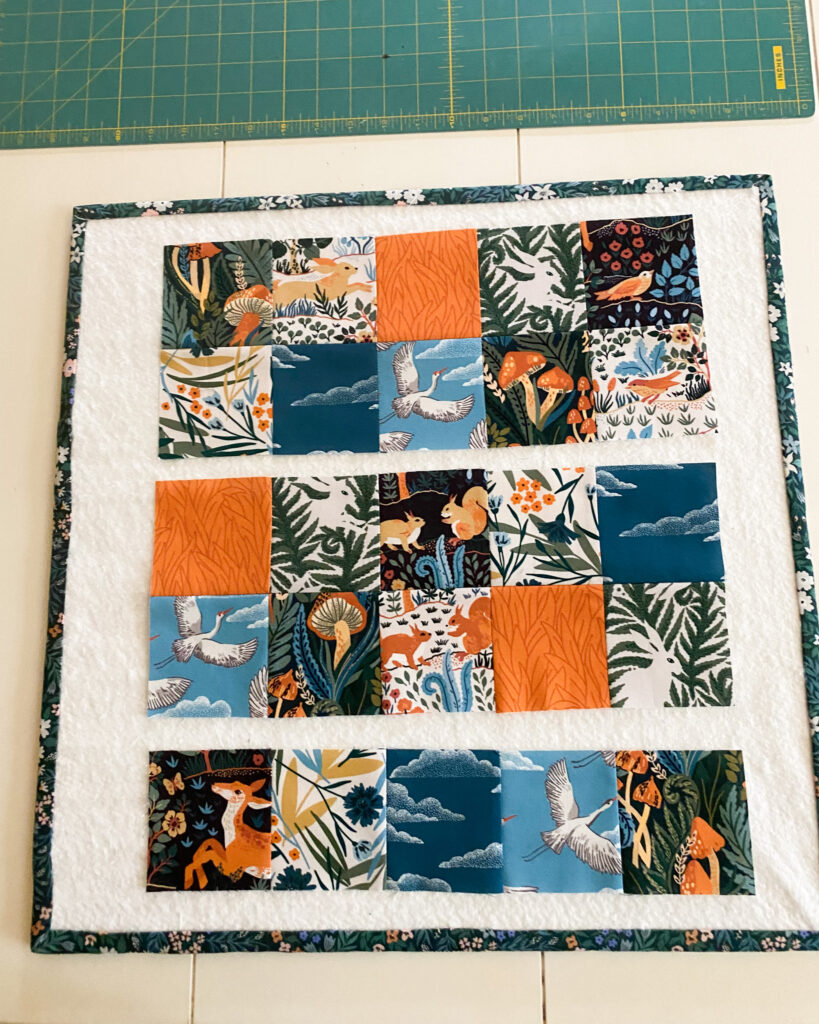
Here is the finished five patch block (25 squares), it measures 15 1/2″ square.
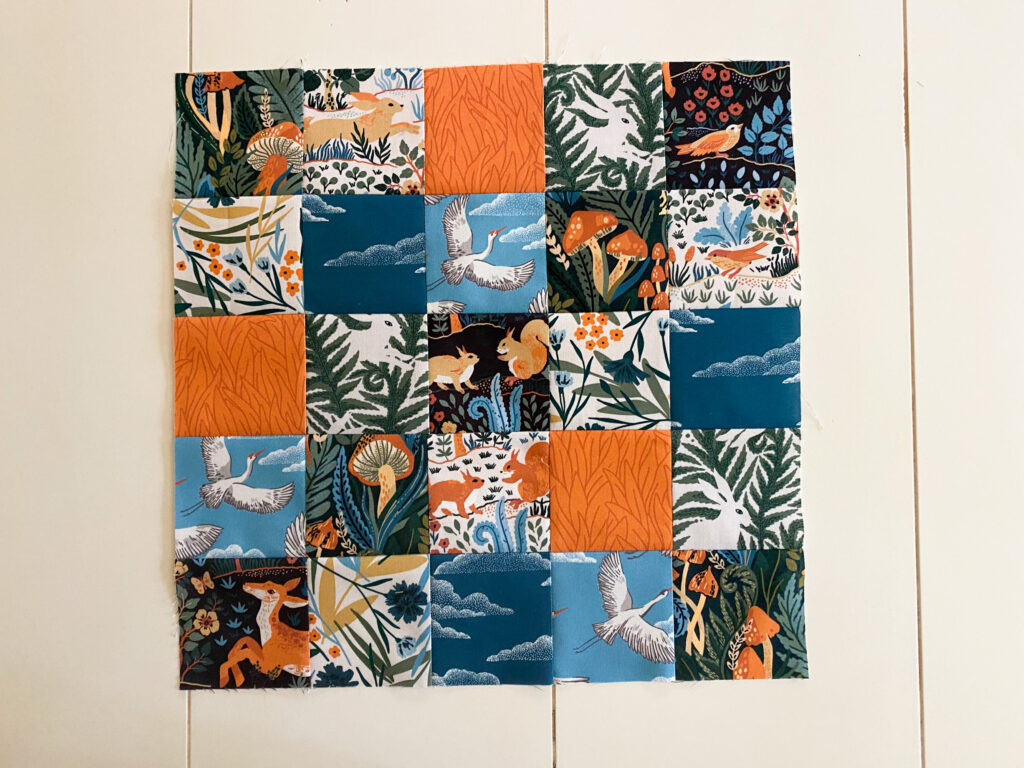
- Pin and sew the 2″ x 15 1/2″border strips to the left and right of the five patch block. Press toward the borders. Repeat with the 2″ x 18 1/2″ strips for the top and bottom borders to complete the pillow top.
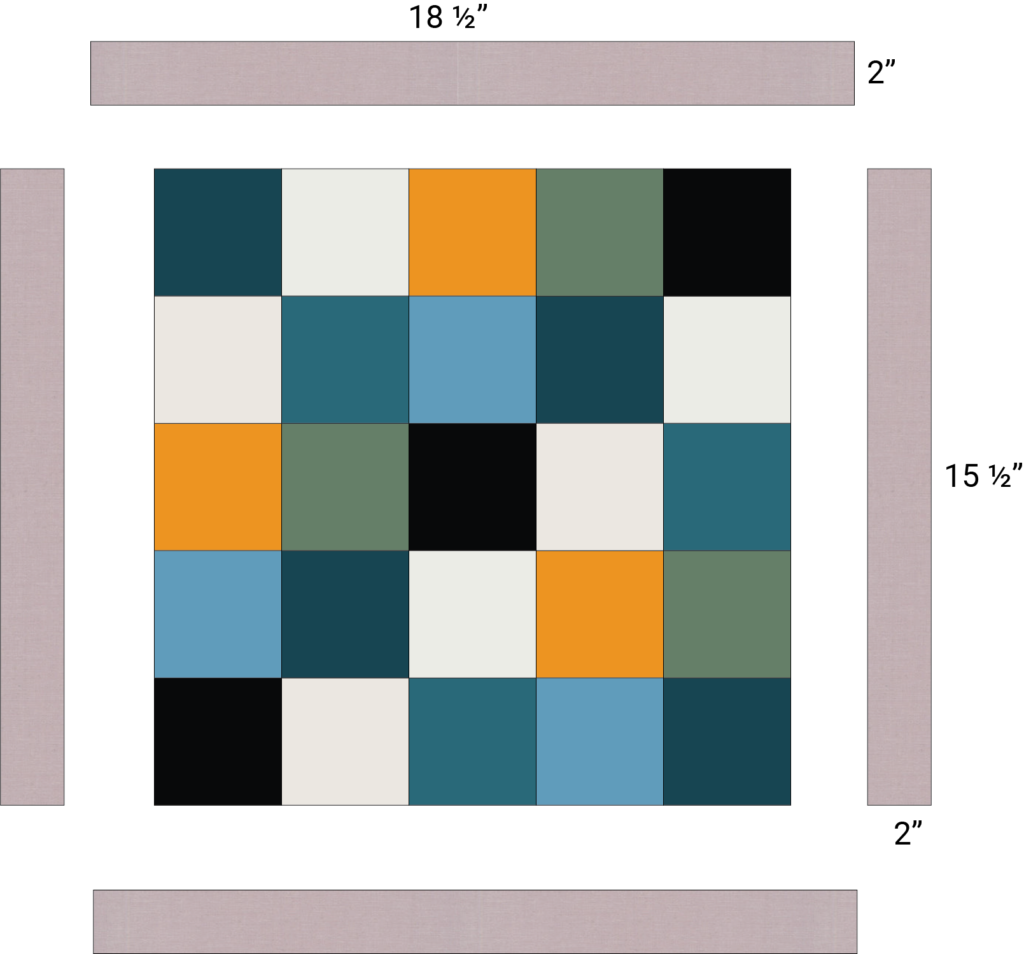

Step 3 – Quilt the Pillow Front
- Create a quilt sandwich with a 22″ square of lining fabric and 20″square of batting, followed by the pillow top. Baste using your preferred method.

- Quilt as desired. I quilted along a few of the vertical rows to hold it all together, I kept the quilting pretty minimal on my pillow this time around.
- Trim the excess batting and lining so the pillow top measures 18 1/2″ square.
Step 5 – Finish the pillow
- Fuse lightweight interfacing to the the wrong side of the two pillow back pieces following manufacturers instructions. You can skip this step if you don’t have interfacing, but it does help with the longevity of your pillow.
- Press under 1/2″ twice along the long edge of the two pillow back pieces. Sew along the long edges 1/8″away from the double folded edge.
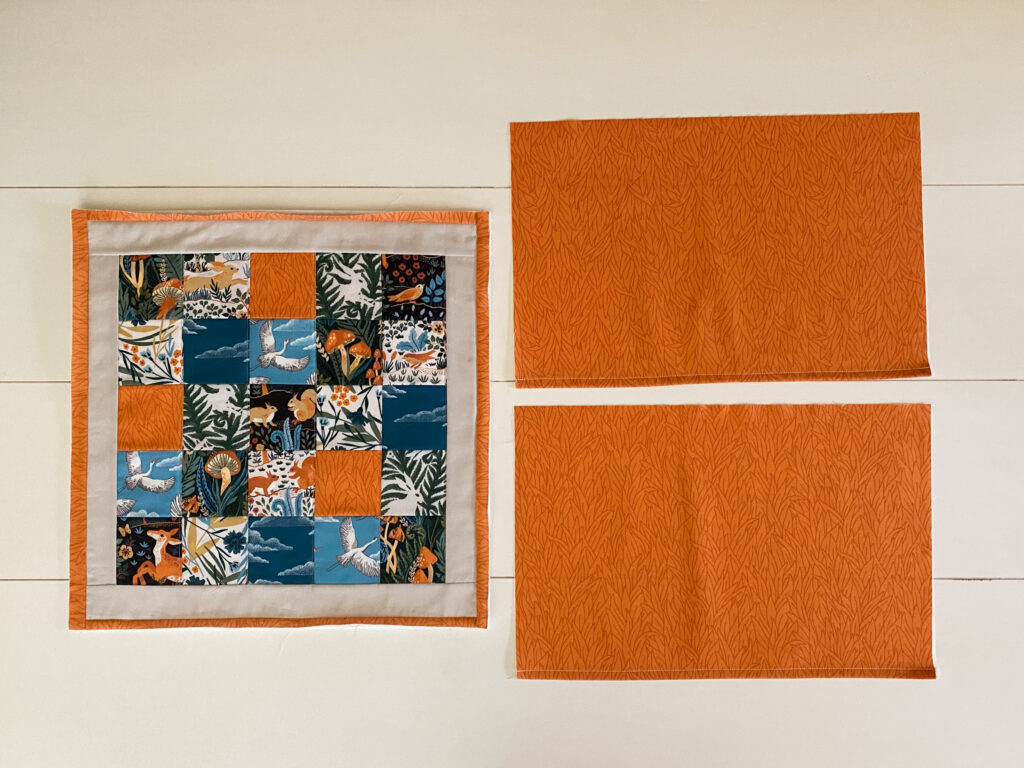
- With the pillow top facing up layer the two backing pieces right sides together on top. Pin in place. Note: To avoid dog ear corners, cut away 1/2″at a angled taper at least 4″along the sides.

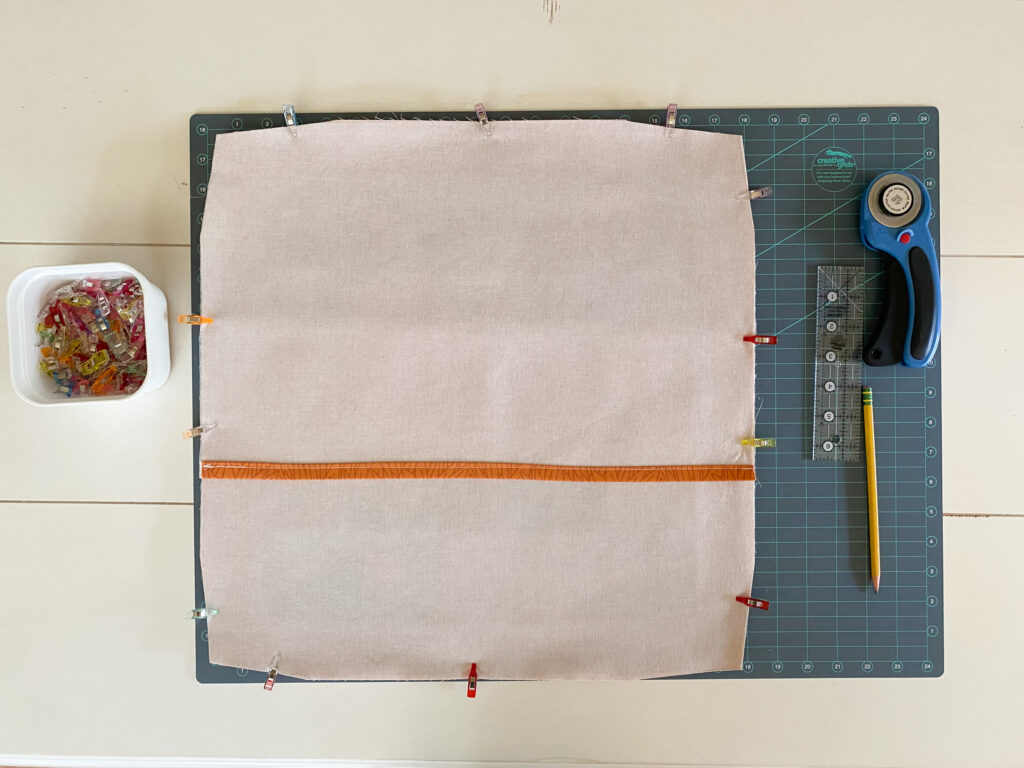
- Sew a 1/2″ seam around the edge of the pillow top.
- Clip the corners, turn your pillow right side out, and push the corners out.
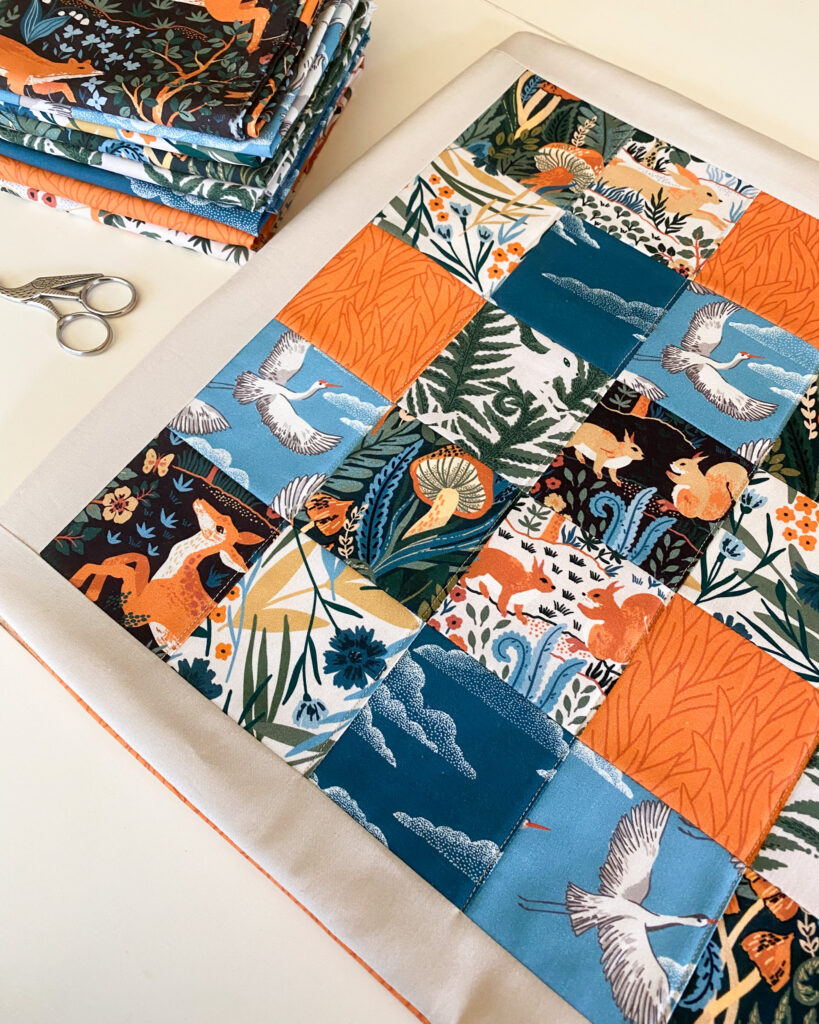
- Place your pillow insert inside, and your pillow is complete!
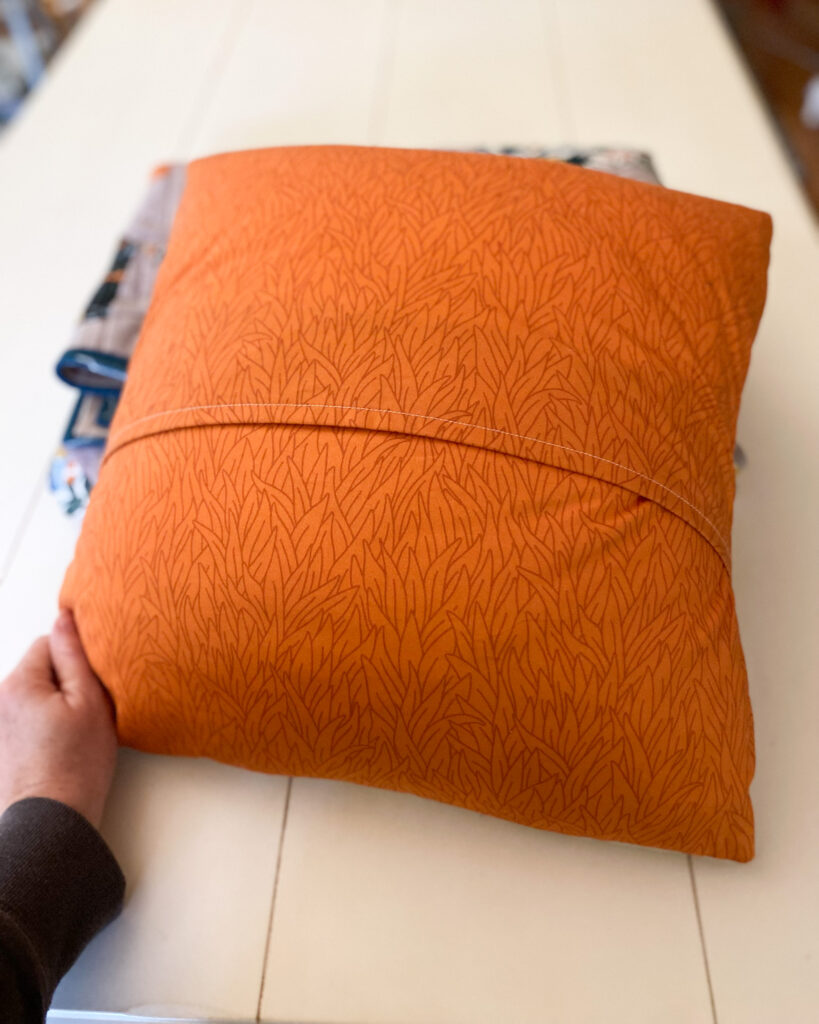

Fabric options for the Patchwork Pillow
See how the Patchwork Pillow will look in another one of your favorite Cloud 9 fabric collections. Click the link to shop the fabric collection.
I hope you enjoy making your pillow!
